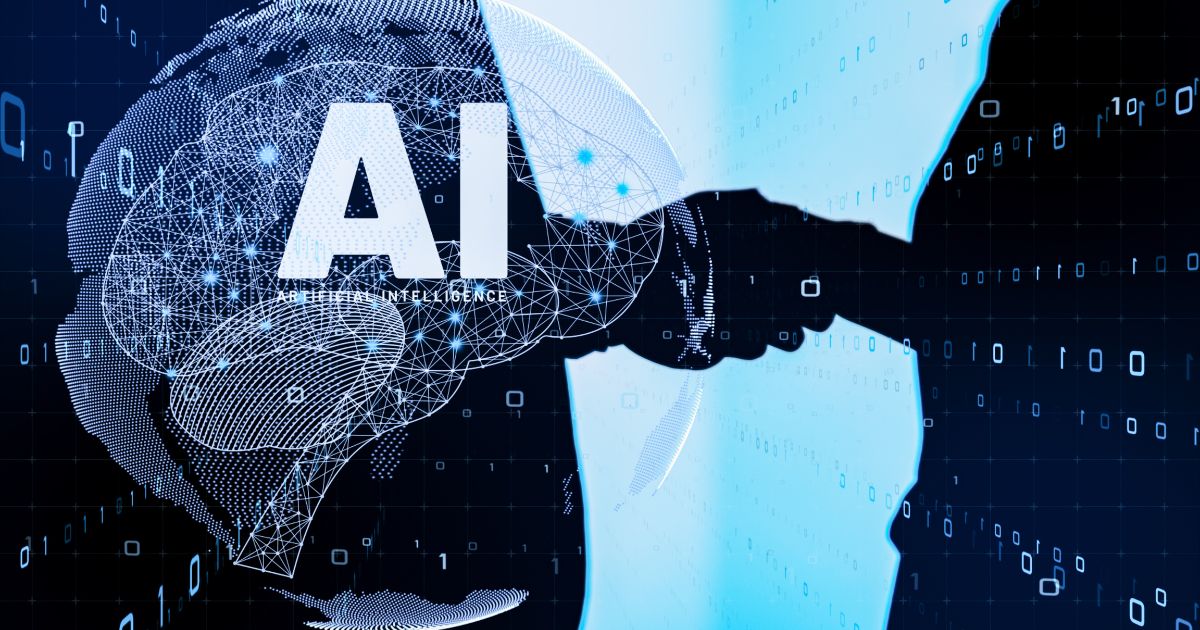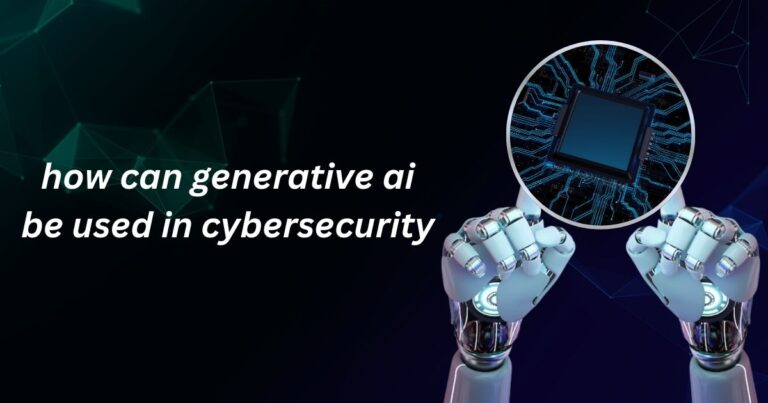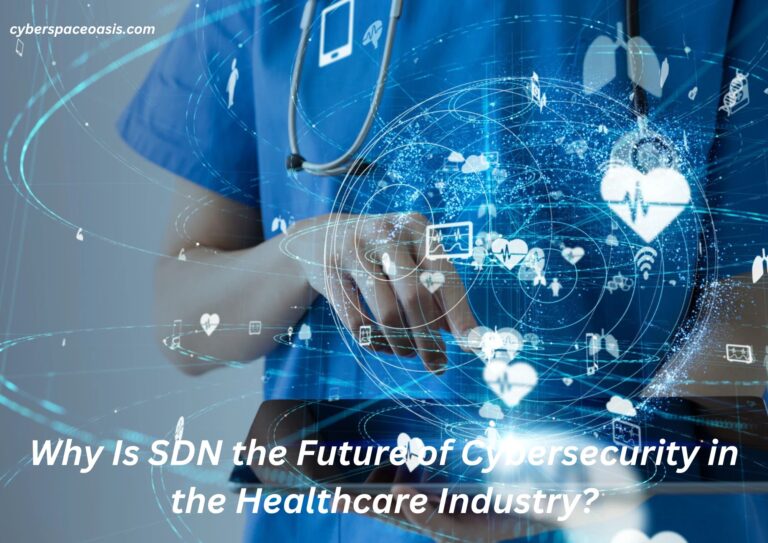
Introduction: The Growing Need for Advanced Cybersecurity in Healthcare
The Digital Revolution in Healthcare
The healthcare company is undergoing a excellent digital transformation. With the adoption of digital fitness facts (EHRs), associated devices, and telemedicine systems, the arena has end up increasingly more reliant on technology. While those upgrades enhance affected character care and operational overall performance, similarly they invent new avenues for cyberattacks.
The sensitive nature of healthcare information makes it a immoderate goal for hackers, and the effects of a breach can be catastrophic. Given these demanding conditions, healthcare companies must turn to advanced technology like Software-Defined Networking (SDN) and Artificial Intelligence (AI) to stable their networks and shield patient records.
The Role of SDN and AI in Cybersecurity
Software-Defined Networking (SDN) and Artificial Intelligence (AI) are remodeling how healthcare businesses technique cybersecurity. SDN gives centralized manipulate over community belongings, allowing healthcare systems to dynamically manipulate and steady their statistics website online visitors. AI, however, complements danger detection talents with the aid of mastering from historic statistics and figuring out anomalies in real-time. Together, those era form a strong protection in competition to cyber threats, allowing healthcare organizations to defend their touchy facts and ensure compliance with guidelines at the side of HIPAA.
Table 1: Comparison of Traditional and Modern Cybersecurity Approaches in Healthcare
| Criteria | Traditional Approach | SDN & AI Approach |
|---|---|---|
| Network Management | Static and manual configurations | Dynamic and centralized control through software |
| Threat Detection | Reactive, based on predefined rules | Proactive, AI-driven anomaly detection |
| Response Time | Delayed due to manual intervention | Real-time response with automated mitigation |
| Scalability | Limited, hardware-dependent | Scalable, software-defined |
| Cost Efficiency | High due to infrastructure requirements | Cost-effective with flexible, automated solutions |
Key Takeaways for Healthcare Leaders
Why SDN is Critical for Securing Healthcare Networks
Healthcare networks have become increasingly more complex, with the proliferation of related clinical gadgets and IoT technology.
Traditional network infrastructures are frequently inflexible, now not able to comply short to emerging cyber threats. SDN addresses this mission thru allowing bendy, software program application software software program software-based totally truely control of community property.
It lets in healthcare IT organizations to segment their networks, maintaining apart sensitive statistics and proscribing the unfold of capability breaches. SDN also offers greater great visibility, permitting administrators to reveal display display net web page net page website site visitors and regulate protection suggestions in actual-time, making it an crucial tool for preserving facts integrity inside the face of evolving cyber threats.
How AI is Enhancing Cyber Threat Detection and Response
Artificial Intelligence (AI) brings a current-day diploma of sophistication to chance detection in healthcare cybersecurity. Traditional structures rely on predefined suggestions to discover threats, making them much less powerful inside the path of novel or evolving assaults.
AI, but, continuously learns from massive datasets and identifies patterns that would sign an attack. By automating the detection and reaction approach, AI reduces the burden on human analysts and ensures that threats are addressed in real-time. In healthcare, in which downtime might also have an effect on affected character care, AI’s capability to abruptly discover and mitigate threats is precious.
Understanding the Basics: SDN and AI in Healthcare Cybersecurity
What is Software-Defined Networking (SDN) and How Does It Work?
Software-Defined Networking (SDN) separates the control plane from the facts aircraft, permitting community administrators to control network assets via software program software application in desire to hardware. This decoupling offers more flexibility and scalability, allowing healthcare businesses to regulate community configurations dynamically in reaction to growing threats.
SDN’s centralized manipulate permits for introduced inexperienced control of data website online traffic, and its capability to segment the community enhances protection thru maintaining apart essential structures.
In the context of healthcare, wherein facts privacy is paramount, SDN gives a robust, scalable solution for coping with complicated community environments.
The Role of AI in Strengthening Cybersecurity Protocols
AI enhances cybersecurity with the useful resource of automating the detection, assessment, and reaction to cyber threats. In a healthcare setting, AI-pushed structures may have a look at big quantities of records in real-time, figuring out styles that propose ability safety breaches.
Machine studying algorithms continuously decorate, becoming extra adept at recognizing cutting-edge assaults. This proactive method permits healthcare agencies to live in advance of rising threats.
By integrating AI with traditional cybersecurity device, healthcare corporations can create a layered safety that guarantees affected person records stays steady on the same time as minimizing the hazard of downtime due to assaults.
The Importance of SDN and AI in Healthcare Cybersecurity
How SDN Enhances Network Security through manner of Reducing Attack Surface
SDN offers a big safety benefit through decreasing the network’s assault ground. In healthcare, in which networks are regularly sprawling and interconnected, each tool or device represents a functionality get proper of get entry to to factor for attackers.
SDN allows healthcare IT businesses to create segmented, isolated community zones, restricting the movement of attackers inside the community. If a breach takes place, SDN allows short isolation of compromised structures, stopping further unfold.
This containment technique is important in protecting touchy affected character information and making sure the continuity of healthcare operations, even inside the face of a cyberattack.
AI for Predictive Threat Detection in Healthcare Systems
AI permits healthcare groups to come upon cyber threats in advance than they increase into entire-blown attacks. Using device studying, AI structures observe historic facts to choose out styles and are searching forward to destiny vulnerabilities.
For example, AI can discover unusual hobby in community internet website web page visitors which can mean the presence of malware or unauthorized get right of get admission to to.
This predictive capability is especially valuable in healthcare, in which early detection can prevent statistics breaches and reduce operational disruptions. By integrating AI into their cybersecurity strategies, healthcare corporations can stay earlier of attackers and ensure the safety of their networks.
Case Studies: Real-World Examples of SDN and AI in Healthcare
How Leading Hospitals are Using SDN for Secure Data Management
One distinguished health facility within the U.S. Applied SDN to consistent its inner community and manipulate affected character facts more successfully.
The health center completed SDN’s segmentation abilties to create remoted network zones for one in each of a kind departments, decreasing the hazard of float-contamination in the occasion of a cyberattack. SDN moreover allowed the health center’s IT enterprise to put in force real-time monitoring and adjust community configurations to reply to growing threats.
This greater flexibility has not great superior information safety however moreover streamlined network manage, permitting the health center to hobby more on affected person care and much less on guide IT techniques.
AI’s Role in Detecting and Responding to Ransomware in Healthcare
Ransomware is a growing chance to healthcare organizations, regularly ensuing inside the loss or theft of essential affected man or woman statistics.
A large healthcare company these days used AI-powered protection device to find out a ransomware attack earlier than it can motive massive damage. The AI system identified uncommon encryption patterns in real-time, flagging the ransomware and keeping apart the affected structures.
This proactive detection allowed the organisation to consist of the attack and prevent the shortage of touchy statistics. AI’s capability to answer to threats in real-time is proving to be a treasured asset inside the fight in competition to ransomware.
Table 2: Benefits of Implementing SDN and AI for Cybersecurity in Healthcare
| Benefit | SDN Contribution | AI Contribution |
|---|---|---|
| Enhanced Network Security | Segmentation and isolation of threats | Predictive threat detection and real-time response |
| Improved Data Privacy | Centralized control of network resources | Anomaly detection to protect patient data |
| Scalability and Flexibility | Dynamic configuration and resource allocation | Automation of routine security tasks |
| Cost Efficiency | Reduced need for hardware upgrades | Automation reduces manual intervention |
6. The Challenges of Implementing SDN and AI in Healthcare
Overcoming Infrastructure and Cost Barriers in Healthcare Organizations
Implementing SDN and AI in healthcare comes with tremendous challenges, particularly round rate and infrastructure upgrades. Many healthcare businesses rely upon legacy structures which can be hard and steeply-priced to update.
Transitioning to SDN requires upgrading each hardware and software program application, that can pressure budgets already allotted to patient care.
AI structures, too, require powerful computational assets and massive datasets to function successfully. Despite those obstacles, the lengthy-term advantages—extra fine safety, operational performance, and decreased hazard of records breaches—make these technologies a profitable investment for healthcare agencies.
How to Address the Skills Gap in Healthcare Cybersecurity Teams
Another most important project in adopting SDN and AI is the lack of skilled professionals to control the ones advanced era. Healthcare IT groups are regularly targeted on retaining existing structures, with constrained know-how in rising fields like SDN and AI.
To cope with this skills gap, healthcare corporations should put money into centered education programs for their IT group of workers. Additionally, partnering with zero.33-party safety companies can help companies bridge the distance at the equal time as their internal businesses broaden the essential know-how.
Closing this hole is important for efficaciously enforcing and retaining SDN and AI technology in the healthcare region.
Key Security Benefits of SDN and AI for Healthcare

Improved Data Security and Patient Privacy
SDN and AI offer healthcare organizations with the tools to seriously enhance records safety and guard affected individual privateness. SDN’s capability to segment and manipulate community web page traffic guarantees that touchy facts is remoted from much less steady regions of the community, lowering the threat of unauthorized get admission to.
AI, meanwhile, continuously video show units for threats and responds in real-time, ensuring that any breach is brief contained.
Together, these technology offer a layered approach to cybersecurity that no longer only protects patient facts however additionally guarantees compliance with healthcare regulations which include HIPAA, safeguarding the commercial enterprise corporation’s recognition and trust.
Faster Incident Response and Recovery Time
SDN and AI lessen the time it takes to come across, reply to, and recover from cyberattacks in healthcare. Traditional techniques depend upon manual intervention, which may be gradual and liable to errors. With SDN, healthcare corporations can short isolate compromised sections of the network, at the equal time as AI automatically detects and mitigates threats in real-time.
This speedy response ensures that healthcare services stay operational at some point of an assault, and sensitive statistics is covered. Faster restoration instances additionally restriction the economic impact of a breach, making SDN and AI crucial for cutting-edge healthcare cybersecurity.
8. Frequently Asked Questions (FAQs)
What is the Difference Between SDN and Traditional Networking?
Traditional networking is predicated on constant, hardware-primarily based configurations which can be tough to regulate and scale. SDN, however, separates the manipulate aircraft from the data plane, thinking of centralized control of the complete network through software program program.
This method offers more flexibility, permitting directors to dynamically adjust network property and safety rules in real-time. SDN moreover improves visibility, making it easier to display community visitors and discover anomalies. In healthcare, in which networks have come to be increasingly complex, SDN offers a more green and consistent way to manipulate and protect sensitive information.
Can AI Fully Replace Human Cybersecurity Experts in Healthcare?
AI cannot absolutely update human cybersecurity specialists, however it notably enhances their competencies. AI excels at automating routine safety duties at the side of tracking network traffic, detecting anomalies, and responding to low-degree threats.
However, healthcare environments are complicated, and human know-how is needed to interpret the consequences furnished with the aid of AI structures and make strategic choices. AI works super as a tool that augments human efforts, allowing cybersecurity teams to recognition on more complicated, immoderate-degree threats while the AI handles the daily obligations of tracking and risk detection.
Conclusion: The Future of Cybersecurity in Healthcare with SDN and AI
A Glimpse into the Future: What’s Next for SDN and AI in Healthcare
The destiny of cybersecurity in healthcare might be formed by way of manner of the continuing improvement of SDN and AI generation. As cyber threats evolve, healthcare agencies will want more superior gear to guard their networks and touchy facts. SDN’s flexibility and scalability make it exceptional for handling the growing complexity of healthcare networks, on the equal time as AI’s ability to analyze and adapt to new threats ensures that corporations stay ahead of attackers. In the coming years, we are able to anticipate to see extra healthcare companies adopting SDN and AI as good sized additives in their cybersecurity strategies.
The Ultimate Goal: Safeguarding Healthcare with Cutting-Edge Technologies
The last goal of implementing SDN and AI in healthcare is to protect patient facts, make sure compliance with guidelines, and maintain believe with sufferers and stakeholders.
These era provide a multi-layered defense towards cyber threats, ensuring that healthcare businesses can preserve to provide outstanding care without compromising facts protection.
As the healthcare zone will become greater reliant on digital technologies, the significance of sturdy cybersecurity answers like SDN and AI will only develop, making them important for the future of healthcare.





